How to connect your learning data to your business success
How can analyzing learning data help identify effective strategies, save time and money, and deliver competitive business results?

Not everything that matters can be measured. Not everything that we can measure matters. – V F Ridgway
In a recent webinar hosted with the Learning and Performance Institute (LPI), Valamis discussed how learning data can help leaders pinpoint effective learning strategies, demonstrate savings in time and money and how data can deliver better business results leading to competitive advantage.
Together with an audience of 103 learning leaders who participated, the following was discussed:
- What is Learning Data?
- Why it’s essential to collect learning data
- How learning data can connect to your organisation’s goals
- What learning data can tell you about your employees and your organisation
- How learning data connects to overall business goals
Let’s take a step back – what is Learning Data?
Going back to basics, learning data is information that is collected from an individual’s learning actions, behaviour, and the context in which this took place.
Why is it essential to collect learning data?
The main area that L&D can miss is that learning goes beyond reporting on the company’s compliance status! It can (or should) be utilised to help ensure ongoing, sustainable talent development and provide learning leaders with the tools to understand learner behaviours.
In addition, it ensures that learning is meaningful, relevant and offers a memorable learning experience, creating the appetite to return.
Learning Data Connection
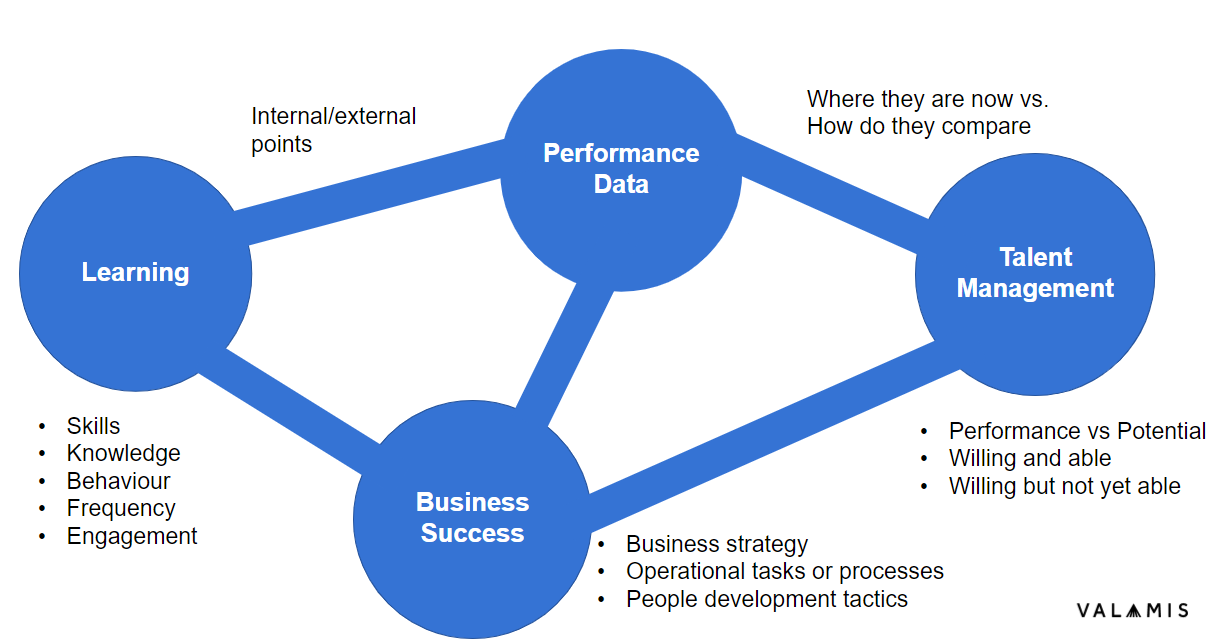
How can learning data connect to your organisation’s goals?
In order to clarify what you want to achieve with learning data, it’s important to first ask ourselves the following questions:
- From a business perspective, what are you trying to achieve with your learning strategy?
- How does this knowledge direct our strategy for collecting learning data?
Setting these goals will determine what success looks like in the long term. The audience was asked what learning data they were currently collecting. The results were as follows:
Poll 1 Results
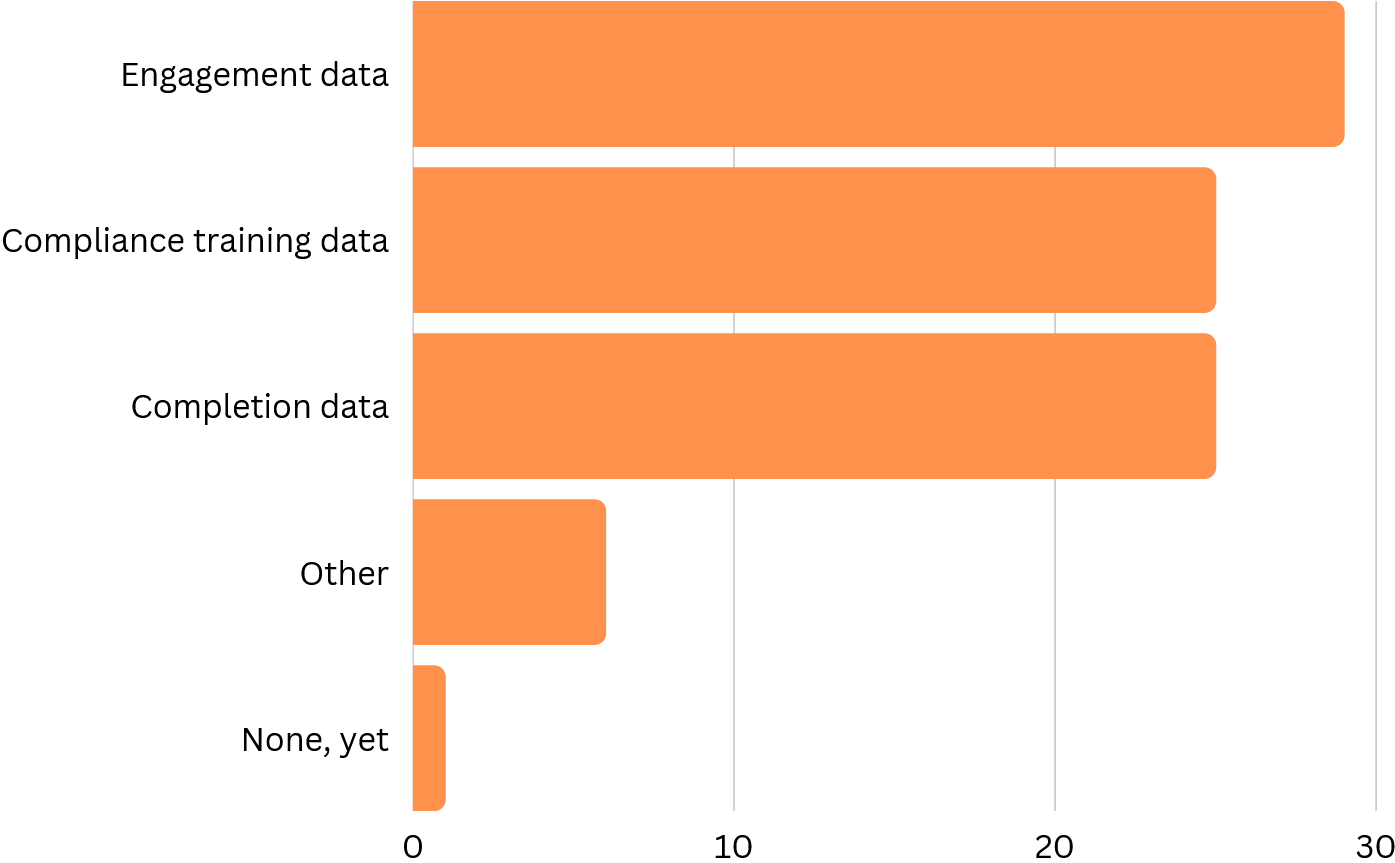
The answers confirmed that the majority were collecting data, albeit for differing reasons.
However, collecting data is the easy part; we are surrounded by it today, but it’s what you do with it next that really matters. Therefore, the same group was asked how and what they used this learning data for:
Poll 2 Results
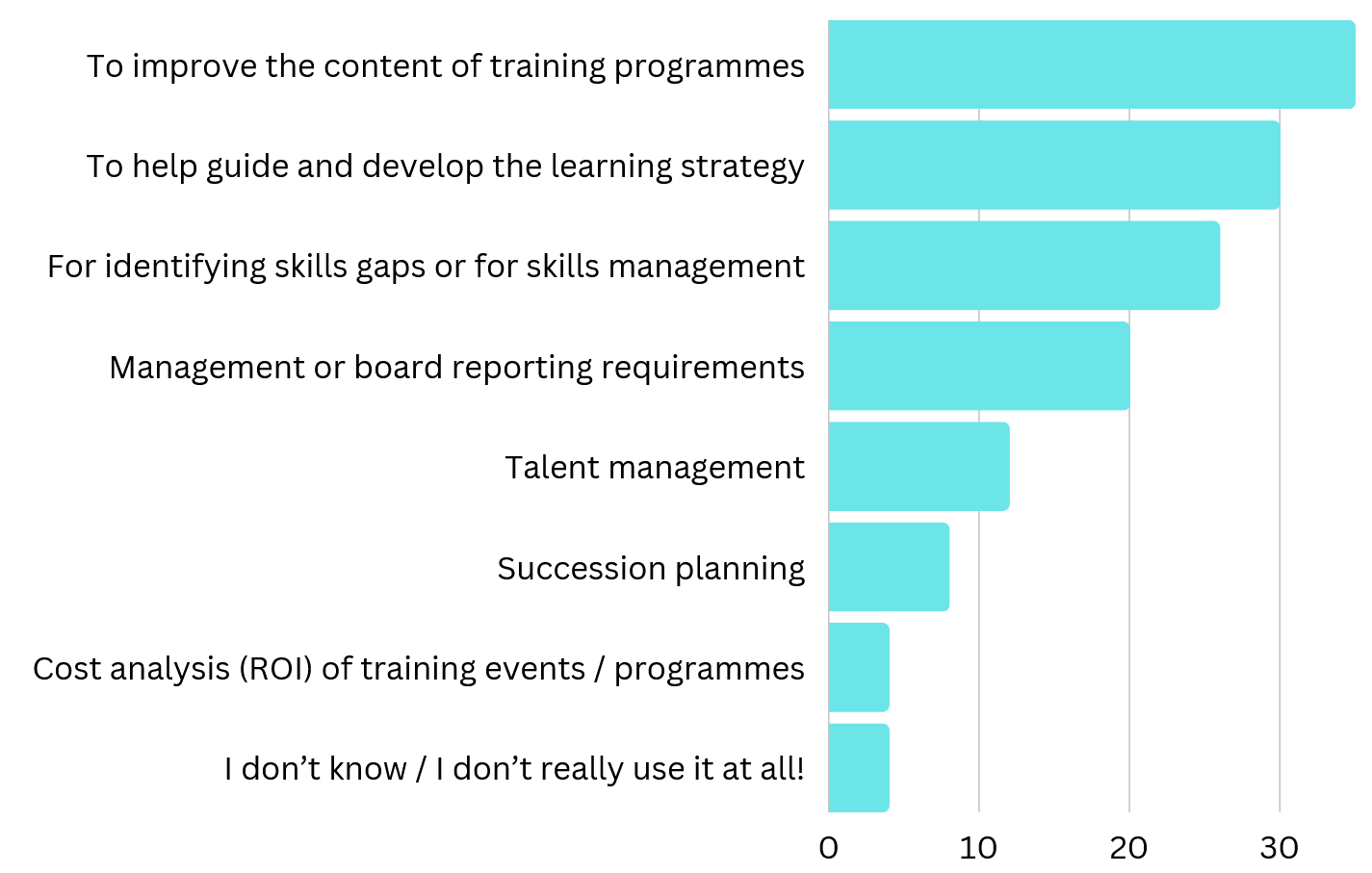
What is learning data telling you about your employees?
The 3 C’s
- They learn for safety: Compliant. In basic terms, employees must learn to maintain physical or mental safety. Be that in terms of compliance training (freedom from risk or injury) or from feeling excluded and left behind (mental wellbeing, resilience, diversity and inclusion)
- They learn to stay knowledgeable: Current. As the nature of work has changed, so have the skills and behaviours we need to remain ‘current’ in what we do. A lot of effort goes into maintaining the status quo.
- They learn for development: Competitive. Building and leading a successful career is predicated on a lifelong love of learning. Those who learn for development understand how important it can be to differentiate themselves from others in a competitive recruitment or business achievement landscape.
The digital learning ecosystem workbook
You’ll get a list of useful questions and tasks to help you know your learning space better and ways to improve it.
DOWNLOAD WORKBOOKWhat can learning data tell you about your organisation?
Learning data can typically consist of course completion rates, assessment scores, learner satisfaction and learning engagement.
These insights can tell your organisation not only about the learners, but about the effectiveness of your training and development strategy as well.
1. Learning data can show where individuals are now and if any skills gaps exist. How does this direct learning or talent development strategies moving forward?
One of the most important pieces of information that your learning data will tell you is where individuals are with their current set of skills and if there are any skills gaps present amongst your teams.
Having the data readily available to analyse your employees’ capabilities will give your organisation a better understanding of where to direct your learning content in order to fill any gaps that are prevalent in your learners.
Where individuals are now:
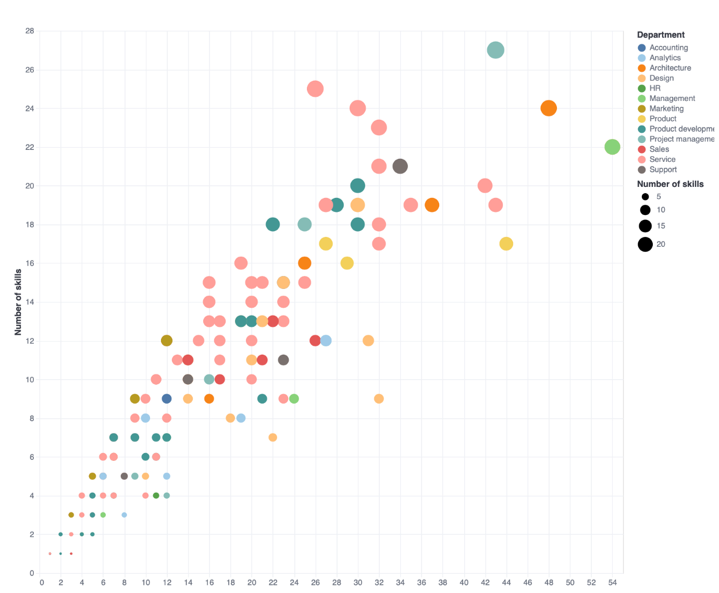
An example of a skills overview data report in Valamis LXP
2. Learning data can tell your organisation where individuals can be in the future through lateral movements.
Having the right set of data about your learners will be able to prepare individuals and your organisation for future growth.
Along with current skills, data can inform your organisation about an individual’s interests through their learning history, career goals and performance data. By combining this data with an employee’s aspirations and assessment of a potential fit, leaders can map out career development plans and make informed decisions about the best lateral moves for employees.
Where individuals could be in the future
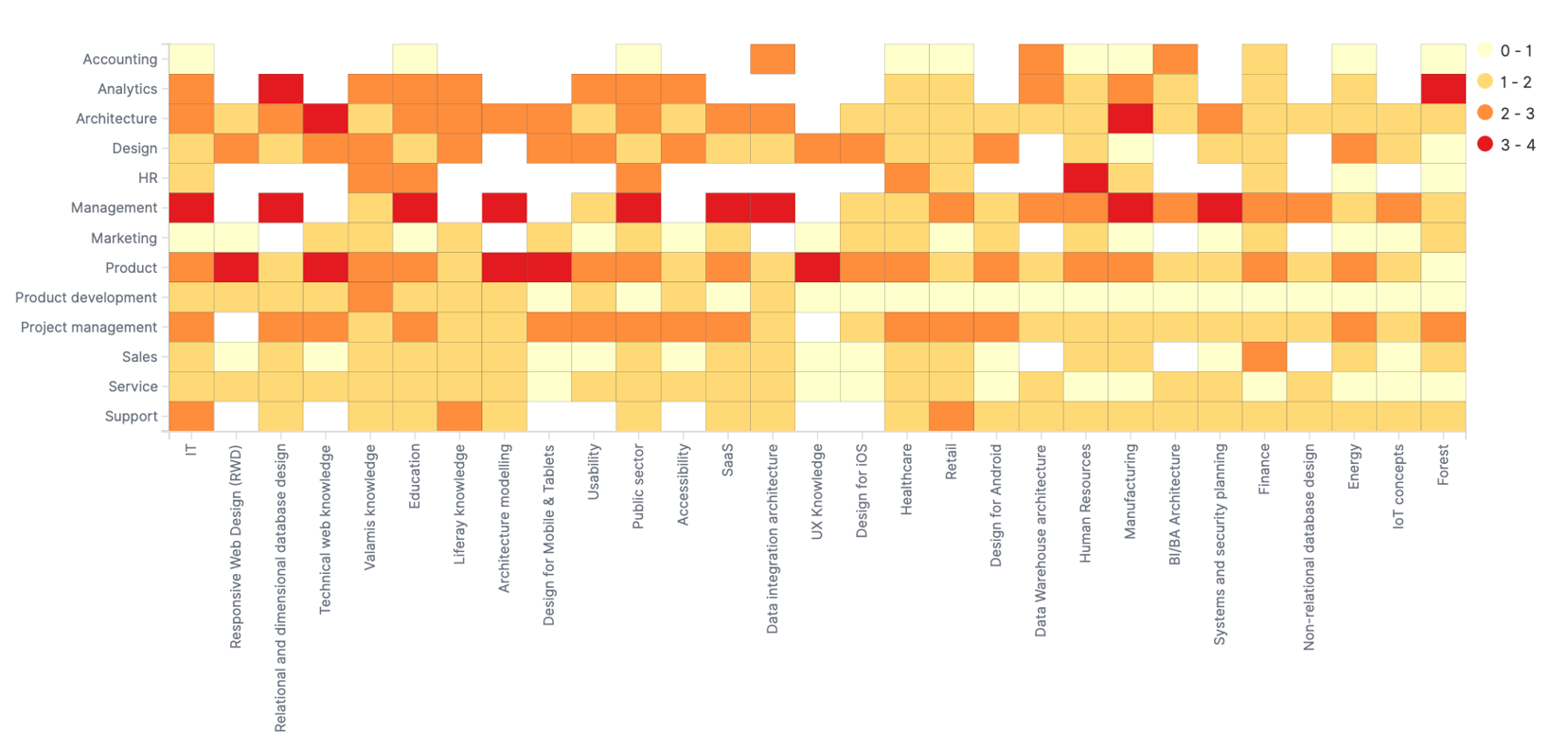
An example of an average skills weight by department report in Valamis LXP
3. Learning data can tell you where to make decisions or take actions that align with the key strategic priorities of HR and L&D.
Learning analytics about the current talent in your organisation will be able to provide key information to HR departments and help them make data-supported decisions about talent attraction, training, development and retention. Analysing current skill level data and reviewing skill gaps helps HR to understand what areas to hire new talent or train and develop existing talent.
Developing a strong and engaging development plan for employees within your learning system will help retain top talent. Learning data will also help organisations to evaluate the impact of their investments in employee learning and, moving forward, will provide better information to make data-driven decisions to improve or change development strategies.
Where to start making decisions, or taking action
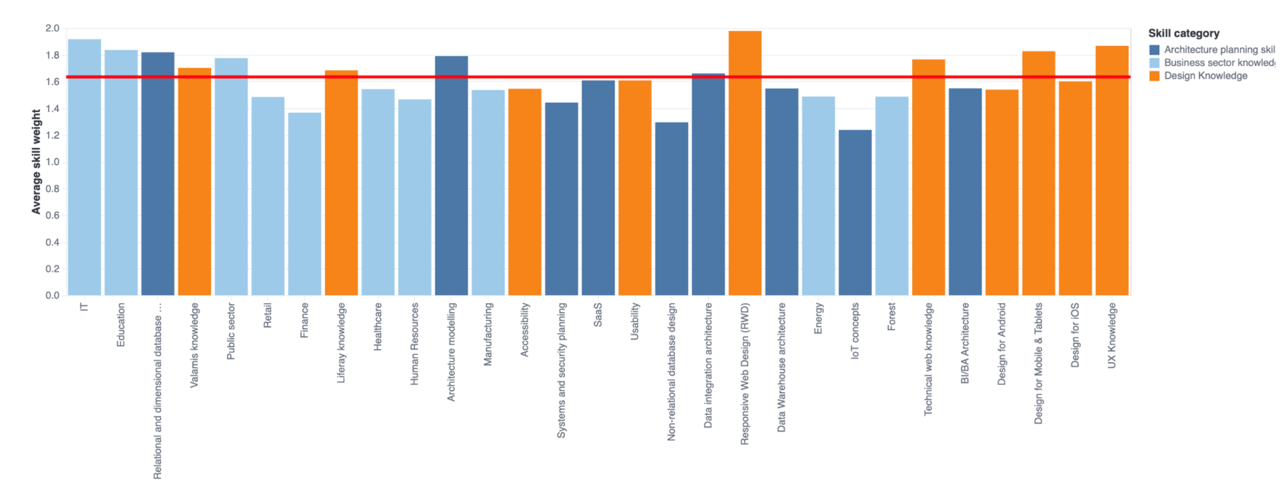
An example of a skills gap analysis report in Valamis LXP
How does learning data connect to overall business goals
Learning metrics can serve as a way of measuring the impact of training and development strategies within your organisation, but it can also prove to be useful beyond L&D departments and help organisations optimise their strategies for maximum business impact.
Learning metrics should align with goals and objectives of the company. By regularly tracking learning data reports, you can adjust training to continuously adjust or improve business strategies.
For example, if one of your business objectives is to improve customer interactions and increase satisfaction, you can use data to tell you learning scores on customer training to understand what areas your team needs to focus on or by reviewing data about learner engagement in courses, you can understand the effectiveness of your customer service training programme.
Although business goals differ from company to company, there are typically several standard learning metrics in place:
- Business KPI’s
- Legislative requirements
- Employee satisfaction – leading to improved employee retention
- Employee recruitment – internal vs external percentage fill
- Sales Performance
- Product Knowledge
- Skills and skills gaps
- Talent management
- Engagement and the success of a content strategy
- The overall quality of their learning experience
After considering the various ways in which the data already being collected could be used, our same webinar audience was asked how they might consider using their learning data moving forward now that they had heard ways to connect the data to business goals. The change in how they viewed the possibilities that are capable with the right data collection was noticeable.
In terms of using data for talent management and succession planning, there was a 50% increase in responses. There was also a marked increase in those who would now begin to utilise learning data for analysing skills gaps and an overall agreement that these learning leaders would now give more time to examining how they could use employee’s learning data to demonstrate the ROI of L&D strategies and the cost benefits of training.
Data about your current L&D efforts will be able to inform and support business achievements and set the course for establishing future goals. Your reporting data should be able to tell you the skills of employees, areas for improvements, and the impact of your training strategies on job and business performance. Using this data should then be used to support informed decision making about organisational changes and resource allocation and drive continuous organisational development.
In conclusion
Our audience proved that learning strategies and content curation methods are not a one size fits all. Organisations naturally vary in what they are trying to achieve. Answering how learning interventions and learning analytic design will support both personal and organisational success is becoming more evident in board-level conversations.
In any goal measurement, a degree of analysis, design, implementation and review is needed to ensure that improvements are made. But knowing where to focus efforts or, indeed, where to place effort in realising results comes from a thorough understanding of how people learn and how this links to an intrinsic need for success. Begin with the end in mind (success), and let your learning interventions and data analytics flow from this.
Lacking employee engagement?
Our approach makes learning more interesting by using different ways to keep learners motivated and inspired, beyond just captivating content.
Learn more



